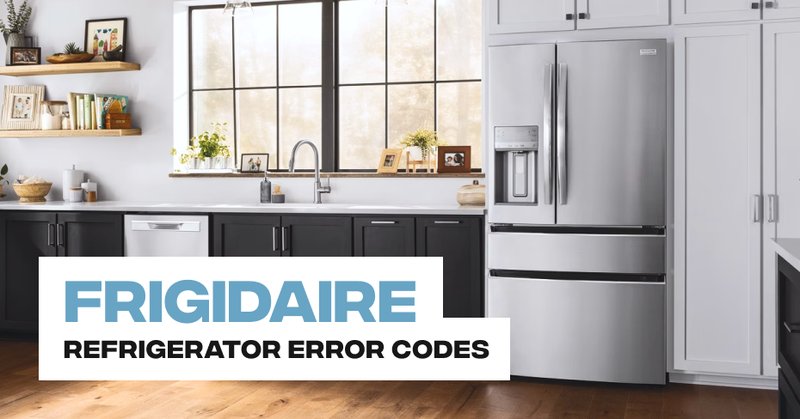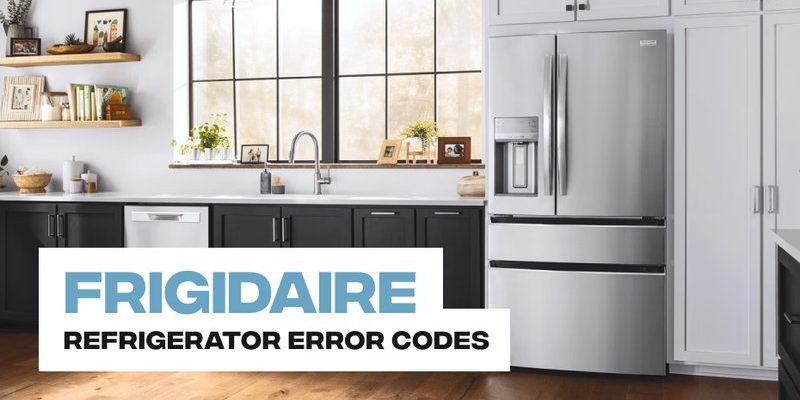
When you encounter an F2 error, it’s like your oven is trying to tell you that something’s not quite right under the hood, much like a car’s check engine light. Understanding these signals can be crucial, not just for fixing the issue at hand but also for preventing future errors and keeping your appliance in great working condition. So, let’s delve into what might be causing your Frigidaire oven to display the F2 error code and what you can do about it.
Understanding the Temperature Sensor
Imagine the temperature sensor in your oven as its internal thermometer. This small but mighty component keeps your oven at the right temperature by sending information to the control board. If the sensor malfunctions, it’s as if the thermometer isn’t taking accurate readings, which can cause the oven to overheat or misinterpret the actual temperature, leading to the F2 error code.
This sensor could become faulty due to general wear and tear, just like any other electronic component. Over time, the connections may weaken, or the sensor might become coated with grime from various cooking spills and residues. When the sensor can’t relay the correct information, your oven doesn’t know how hot it really is, making it think it’s hotter than it should be.
Now, you might be wondering what can be done if this happens. The good news is that replacing a temperature sensor is usually straightforward. It’s a bit like changing a battery—once you know where it is, you can swap it out. Before you do, however, it’s wise to consult your oven’s manual to locate the sensor and ensure you’re handling components safely. If the idea of doing this yourself is daunting, you might consider enlisting the help of a professional.
Issues with the Control Board
Think of the control board as the brain of your oven. It’s responsible for interpreting signals, like those from the temperature sensor, and ensuring the oven does what it’s supposed to do. If the control board has issues, it might misinterpret the information it’s receiving, which can lead to an F2 error code. It’s akin to a computer getting a bad data feed and crashing.
A variety of problems can cause the control board to fail. Electrical surges can fry its delicate circuits, or it could suffer from manufacturing defects. Sometimes, as with any computer-like system, it may simply need a reset. In simpler cases, turning off the power for a few minutes and then powering it back up can clear minor glitches.
If resetting doesn’t work, a deeper issue might be to blame. Replacing a control board is a bit more complex than replacing a sensor, so if you’re not comfortable fiddling around with electronics, calling in a professional might be the way to go. It’s always better to address these issues promptly before they lead to further complications.
Overheating: Causes and Solutions
When ovens overheat, it’s not just an inconvenience; it can be a safety hazard. The F2 error code often signals that the temperature inside the oven has exceeded a safe limit, which might be due to the oven’s cooling system not working correctly. This situation is similar to a car overheating because the radiator isn’t cooling the engine properly.
What might cause your oven to overheat? A blocked or faulty fan can contribute to poor heat regulation. If air isn’t circulating properly, hot spots can develop, prompting the oven to overheat. Checking whether the fan is spinning freely or if there’s any obstruction is a good starting point. Sometimes a thorough cleaning can solve the issue, much like clearing leaves from a car’s radiator.
You can prevent these scenarios by routinely checking and cleaning the oven, ensuring that air vents are clear and that components like fans function correctly. Regular maintenance is key to avoiding these common pitfalls, much like servicing your car to keep it running smoothly.
Final Thoughts & Preventative Tips
Encountering an F2 error code on your Frigidaire oven might seem daunting at first, but understanding the common causes can make troubleshooting a breeze. It often boils down to issues with the temperature sensor, control board, or overheating. By addressing these areas, you can often resolve the error yourself, even if you’re not a seasoned appliance repair technician.
Regular maintenance is your best ally in preventing these issues from occurring in the first place. Much like taking your car in for regular checkups, making sure everything in your oven is clean and working properly can save you a lot of trouble down the line. Keep an eye on your oven’s performance and don’t ignore the small signs that something might be amiss.
Before you know it, you’ll have your oven back on track and your meals cooking perfectly. If you ever feel out of your depth, don’t hesitate to call in a professional. After all, ensuring the safety and longevity of your kitchen appliances is worth the investment.
